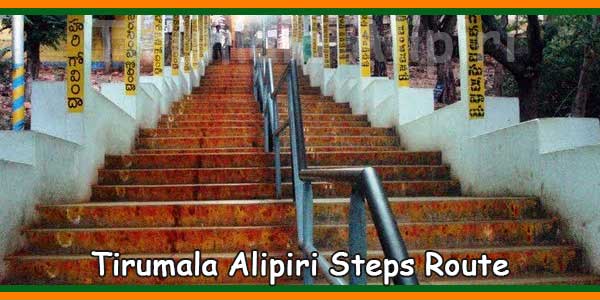Telugu-speaking Peoples say Sri Venkateswara Swamy, Tamil Speeking Peoples say, Malayappa Swami, Kannada Speeking Peoples say Tirupati Thimmappa, and Hindi Speeking Peoples say Tirumala Balaji Temple. The below article explains Tirumala Balaji Temple’s History.
About the Sacred Tirumala Seven Hills:
According to Puranas, the Seven heads of Adishesa are the Seven Hills of Tirumala. The Seven peaks are Seshadri, Neeladri, Garudadri, Anjanadri, Vrishabhadri, Narayanadri, and Venkatadri.
Ancient Tirumala Balaji Temple History:

Many legends are associated with the sacred seven hills and the Lord resting atop the Hills here. The myths are so intertwined that one cannot distinguish and separate the Lord from the Sacred seven hills. These hills are said to have waited for the Lord for thousands and thousands of years. Some of these stories are highlighted here.
Tirumala Venkateswara Swamy History :
According to Hindu mythology and legends, the foundation of the Tirumala Hills can be traced back to Treta yuga, i.e., during Lord Ram’s existence on earth. When Ravana takes away Sita from the forest, Lord Agni (God of fire) intervenes and takes Sita away from him in exchange for one Vedavati, once the staunch devotee of Lord Vishnu. Vedavati wanted to become the wife of Lord Srimannarayana and to achieve this end, she went into the forests and started meditating when she was disturbed by Ravana. Ravana, astonished to see the beauty of Vedavati, wants to marry her, but she refuses. Ravana insists and threatens her with abduction. Having found no way to escape this situation, Vedavati vows to cause Ravana’s downfall and death before sacrificing her life by becoming Ahuti in fire. Agni, the God of Fire, saves and protects her.
Thus, when Ravana takes Sita from the forest, Agri intervenes and sends Vedavati in place of Sita. This is said to be the reason for Lord Ram’s asking Sita (Vedavati, who is rescued from Ravana) for the performance of Agni-Pravesh to get Sita back from Agni. Till such time, Agni protects Sita. Thus, Vedavati goes with Ravana and spends about a year in Lanka, thereby becoming the reason for his downfall and death.
When Vedavati performs Agni-pravesh, Lord Agni appears, and Sita is restored to Rama with gratitude.
Here is Another Legend:
Once upon a time, there was one staunch devotee (asura) of Lord Vishnu named Vrishabhasura. Earlier, he performs Ghora-Tapas for the Lord. The Lord appears and readies to shower boons on the asura. But Vrishabhadra asks for a boon, which Lord Vishnu readily accepts. The boon was ‘Vrishabhasura’s desire to fight with the Lord.’
The fight began, and both sides put in their strengths. Even after putting up a courageous front, Vrishabhasura is defeated by Lord Vishnu. The Lord first destroys the ‘Aham’ (or Ego) of Vrishabhasura. The asura then begs the Lord to forgive him and asks for asylum, which he readily grants. Then Vrishabhasura asks the Lord to put HisLotusFeet on his head and rest there! Lord Vishnu assures Vrishabhasura that, during Kali-yuga, He will reincarnate as Lord Venkateswara, and he will rest on him. Vrishabhasura becomes a prominent mountain on earth and waits for the Lord to come down to world. At last, during Kali yugam, the Lord reincarnates as Venkateswara and rests on the mountain/hill, fulfilling the desire of Vrishabhasura.
Here is yet Another Legend:
There was one devotee by the name of Bawaji, living on the seven hills near Tirumala Temple long, long ago. Sri Venkateswara often visited Bawaji’s place to play ‘Paachikalu’ (a kind of dice game). As usual, the Lord one night, after Ekantha Seva, came to play the game with Bawaji. Before starting the game, the Lord placed the bracelet of His right hand beside Him. Bawaji played the game the whole night with the Lord. It was the time for Suprabhata Seva, and the Temple bells rang to awaken the Lord. Until then, Sri Venkateswara played Paachikalu with Bawaji, was alerted, and rushed back to the Temple. The Lord forgets to wear His bracelet (really?) in that rush.
During Suprabhata Seva, the Temple’s chief priest observed one of the bracelets to be missing and sounded alert around. In the morning, Bawaji, having noticed the Lord’s bracelet, rushed to the Temple to return it to Him. On the way, the temple priests found the bracelet in Bawaji’s hands, and he was immediately imprisoned. The case came for trial before the king. Bawaji explained everything to the king. Disbelieved, the king made fun of the story and challenged Bawaji to prove his innocence. The challenge was Bawaji was to be able to crush and eat a massive heap of sugarcane placed inside his prison before dawn to prove his innocence. Otherwise, he would be deemed the thief of the Lord’s bracelet.
That night, Bawaji said just these few words in his heart: “Oh Lord, I have played |Pachikalu with you that night. You, too, know that I am not the thief. Then, why should I worry?” And he went to sound sleep.
It was the test for the Lord to prove His devotee’s innocence. He had to rush to the prison to rescue His devotee. The Lord assumed Himself an elephant crushed and ate all that massive heap of sugarcane lying in Bawaji’s prison before sunrise.
In the morning, Bawaji was again before the king for trial. Voila! The crushed remains of sugarcane were found in his prison. The king, in amazement, asked Bawaji for an explanation. Bawaji smiled, “Would you now believe me if I say that the Lord came as an elephant and ate all that?”. The king realized and sought Bawaji’s forgiveness.
[There is a beautiful painting of the Lord with Bawaji playing the game on the wall near the Temple. This painting can be viewed from where the devotees stand in queue outside the temple premises.]

Tirumala Modern History :
Rulers of several South India have paid homage to Lord Sri Venkateswara and patronized the ancient Temple.
The Pallavas of Kancheepuram (about 9th Century A.D.), the Cholas of Thanjavur (about a Century later), the Pandyas of Madurai, and the kings and chieftains of Vijayanagar (during the 14th & 15th Centuries A.D.) were devotees of the Lord. It was also said that they competed with one another in patronizing and endowing the shrine with valuable offerings and contributions.
The later years were different. Only during the great Vijayanagara Empire did the contributions to the Temple increase manifold. Sri Krishnadevaraya is believed to possess the shrine in his kingdom.
Even after the decline of the Vijayanagar dynasty, nobles and chieftains from all parts of the Country continued to pay their homage and offer gifts to the temple shrine.
The General of the Maratha kingdom, Raghoji Bhonsle, also visited the Temple and set up a permanent endowment for worship. He also presented valuable jewels to the Lord, including a large Emerald still preserved in a box named after the General.
Also among the later rulers who endowed large amounts were the rulers of Mysore and Gadwal.
After the fall of the Hindu Kingdoms, the Muslim rulers of Karnataka, later the British, took over, and many of the temples came under their supervisory and protective control.
In 1843 A.D., the East India Company divested itself of the direct management of non-Christian places of worship and native religious institutions. The administration of the shrine of Sri Venkateswara and several estates were then entrusted to Sri Seva Dasji of the Hatiramji Mutt at Tirumala, and the Temple remained under these Mahants’ administration until 1933 A.D.
In 1933, the Madras Legislature passed a particular Act, which empowered the Tirumala Tirupati Devasthanams (TTD) Committee to control and administer a fixed group of temples in the Tirumala-Tirupati area through a Commissioner appointed by the Government of Madras.
In 1951, the Act of 1933 was replaced by an enactment whereby the administration of TTD was entrusted to a Board of Trustees, and the Government appointed an Executive Officer.
On the re-organization of States on a linguistic basis, a separate State for Telugu-speaking people was formed, and the Government of Andhra Pradesh took over the Administration of the Temple through this Board. The Endowments Department of the Government of Andhra Pradesh nominates the chairman and members of the Board.
The provisions of the Act of 1951 were retained by the Charitable and Religious Endowments Act 1966.
